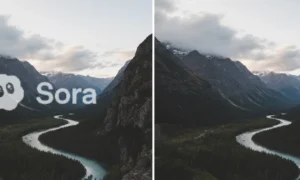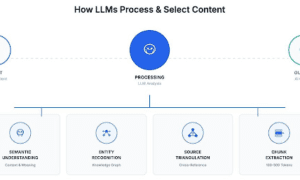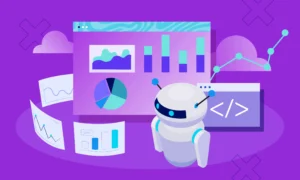Welcome to a world where creativity knows no bounds! In our modern digital age, the realm of graphic design has undergone a remarkable transformation, thanks to the extraordinary capabilities of 3D graphics and animation. Whether you’re a budding designer or simply someone who appreciates visually stunning creations, prepare to be captivated as we embark on a journey into the realm of 3D graphics, where we witness the magical transformation of graphic design projects. From awe-inspiring animations that evoke emotions to mind-bending illusions that challenge our perception of reality, join us as we explore how 3D graphics have become an indispensable tool for unlocking creativity and elevating design projects to unprecedented heights.
Introduction
Understanding 3D Graphics and Animation
In straightforward terms, 3D graphics and animation involve crafting three-dimensional images using a computer. Unlike conventional two-dimensional (2D) images, which are confined to height and width, 3D images introduce depth, making them more lifelike and realistic—an ideal choice for graphic design projects.
3D graphics and animation offer versatility, enabling the creation of anything from basic shapes and logos to intricate illustrations and animations. The surge in the popularity of 3D movies and video games has amplified the demand for these services, prompting many graphic design firms to incorporate 3D graphics and animation into their offerings.
If you’re contemplating integrating 3D graphics or animation into your upcoming graphic design project, keep a few key considerations in mind. First and foremost, communicate your vision clearly to your designer or animator. A solid grasp of your objectives is essential for achieving optimal results.
Additionally, bear in mind that 3D graphics and animation can be resource-intensive. If you’re working within budget constraints, you might want to consider sticking with 2D images. However, if resources are abundant, 3D can infuse your project with an unparalleled level of realism and intricacy.
Moreover, remember that crafting 3D graphics and animation takes time. Factor this into your project timeline and budget accordingly. Lastly, the quality of your 3D graphics and animation hinges on the expertise of your designer or animator. Investing in a seasoned professional is always a prudent choice.
Advantages of Utilizing 3D Graphics and Animation in Graphic Design Projects
In the past, graphic designers predominantly relied on 2D tools and techniques. However, the emergence of potent 3D graphics and animation software has prompted a substantial shift towards 3D in design projects. And this shift is well-founded, considering the myriad advantages 3D graphic design brings compared to traditional 2D methods.
To begin with, working in three dimensions empowers designers to craft substantially more realistic and lifelike visuals. This proves especially valuable for constructing product mockups or visual representations, as it grants viewers a heightened sense of the final product’s appearance. Furthermore, 3D graphics and animation can be leveraged to introduce attention-grabbing effects and animations that breathe life into a design.
Another substantial perk of integrating 3D graphics into graphic design projects is the ease with which interactivity can be woven into your designs. Viewers can now explore your creations in novel ways, and you can incorporate interactive elements such as buttons, menus, and even games. This interactivity elevates your designs to the next tier, crafting genuinely engaging experiences for your audience.
So, if you’re seeking to elevate your graphic design endeavors, contemplate incorporating 3D graphics and animation into your toolkit. Given the manifold benefits it offers, exploration is certainly warranted!
Getting Started with 3D Graphics and Animation
If you aspire to infuse your graphic design projects with an extra dimension of creativity and flair, 3D graphics and animation hold the key. But how does one embark on this journey? Here are some pointers:
- Develop a foundational understanding of 3D graphics and animation. This serves as a robust base for delving into more advanced techniques.
- Experiment with various software applications. Numerous excellent options are available, so select one that aligns with your preferences and project objectives.
- Commence with modest endeavors. Avoid tackling overly complex projects right out of the gate. Start with simpler tasks to acquaint yourself with the process before progressing to more intricate work.
- Harness tutorials. Abundant online resources can aid in mastering the intricacies of 3D graphics and animation. Take advantage of them!
- Practice diligently. Proficiency in 3D graphics and animation grows with experience. Keep honing your skills, and soon, you’ll be crafting professional-level designs effortlessly!
Innovative Applications of 3D Graphics and Animation
3D graphics and animation introduce an additional layer of depth and realism to any graphic design project. Consider these inventive ways to leverage 3D graphics and animation to elevate your creations:
- Illuminate with lifelike shadows and lighting effects: Thoughtfully applied shadows and lighting can significantly enhance the overall aesthetics of your project. By imbuing your designs with realistic lighting and shadows using 3D graphics, you create immersive and believable visual experiences.
- Craft three-dimensional text: Text plays a pivotal role in graphic design. By rendering text in three dimensions, you introduce an extra layer of depth and intrigue to your designs.
- Infuse motion through animation: Animation breathes life into your designs in a manner static images can’t match. By animating objects within your composition, you evoke a sense of movement and vitality that captures attention and sustains viewer engagement.
- Elevate impact with special effects: Effects such as fire, smoke, or water can elevate your designs to new heights. With 3D graphics, you have the capability to seamlessly integrate these effects with realism and precision.
Tools & Resources for Crafting 3D Graphics and Animation
A plethora of software programs exists for creating 3D graphics and animation. Among the most esteemed options are Maya, 3ds Max, Cinema 4D, and Blender. These platforms empower you to fabricate highly authentic images and animations applicable across various media.
These tools unlock the potential to craft elements that would be unattainable with conventional 2D graphic design software. They facilitate the creation of lifelike environments, characters, and objects suitable for deployment in movies, video games, and diverse media formats.
Furthermore, these software solutions can expedite project development by enabling swift prototyping and idea testing, sparing you the laborious process of manual drawing. This efficiency proves invaluable, especially when working within tight project timelines.
To delve into the mastery of these powerful tools, a wealth of resources is readily available online. From tutorials and books to comprehensive online courses, you can access a plethora of educational materials to enrich your expertise in creating captivating 3D graphics and animations.
Common Pitfalls in Utilizing 3D Graphics and Animation
3D graphics and animation are potent tools for transforming the visual appeal of graphic design projects, but their effective deployment can be fraught with challenges. Be mindful of these common missteps when working with 3D graphics and animation:
- Neglecting the audience: Tailor your 3D graphics and animations to your intended audience. Consider factors such as age, understanding of 3D concepts, and the purpose of the design to ensure your creations resonate effectively.
- Avoiding overcomplication: Excessive detail or complexity can confuse viewers and detract from the impact of your design. Sometimes, simplicity is the key to effective use of 3D graphics and animation.
- Balancing 2D and 3D elements: Don’t forsake 2D entirely. A harmonious blend of 2D and 3D elements often yields the most visually appealing and impactful designs.
- Overlooking lighting: Lighting profoundly influences the perception of your 3D design. Take time to fine-tune lighting to create realistic and compelling visuals.
- Selecting the right software: Each 3D software program has distinct features and capabilities. Careful selection is crucial to ensure that your chosen program aligns with your project’s requirements and your own skillset.
Conclusion
3D graphics and animation offer a realm of possibilities for enhancing graphic design projects. Armed with the right tools and techniques, you can craft mesmerizing visual effects that breathe life into your ideas in a creative and distinctive manner. Whether you’re engaged in animation, video game design, or simply seeking to add a touch of flair to your web design projects, 3D graphics and animation empower you to do so with greater ease than ever before. Embark on your exploration today and witness how 3D graphics can propel your projects to unparalleled heights!





























